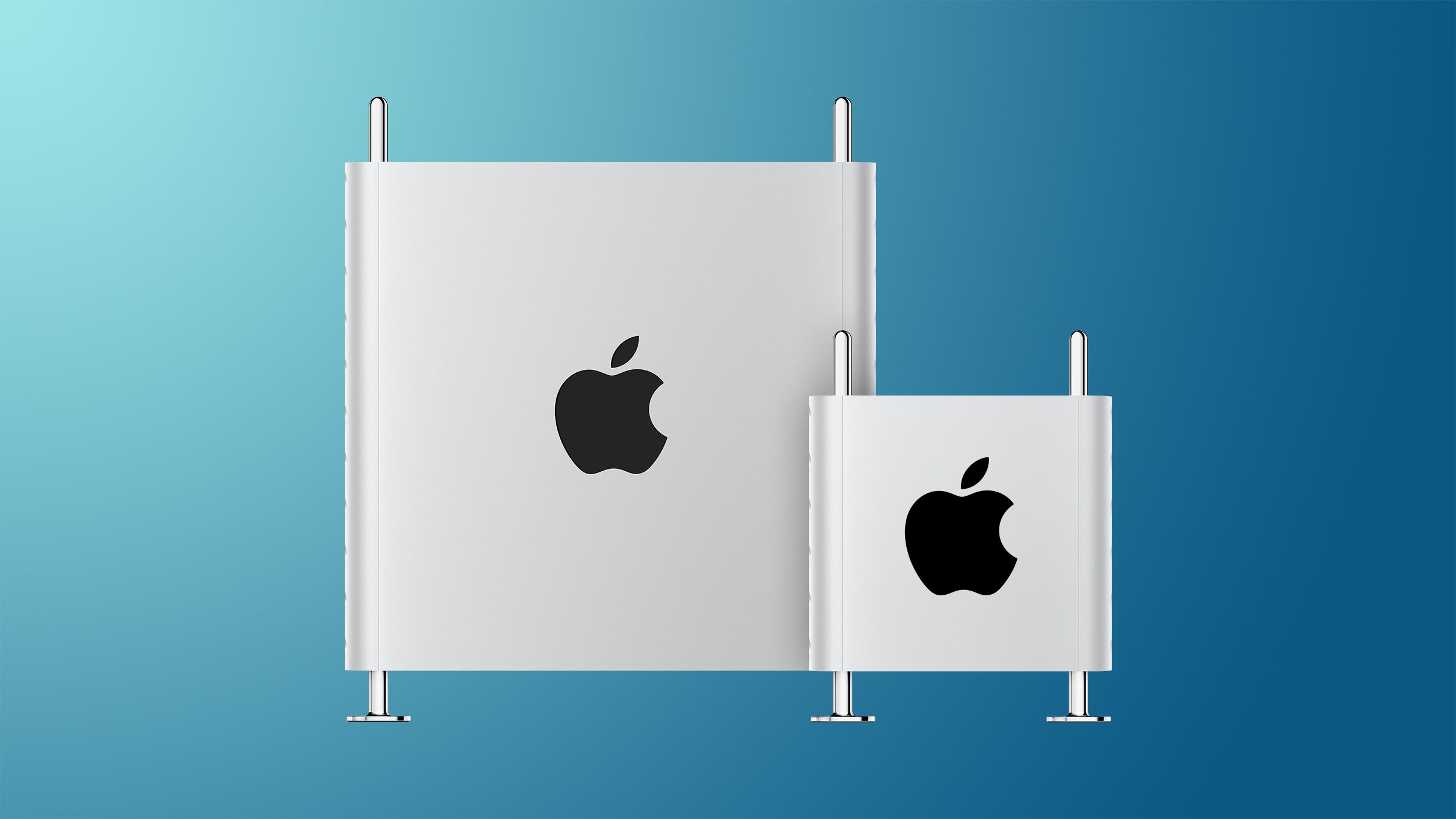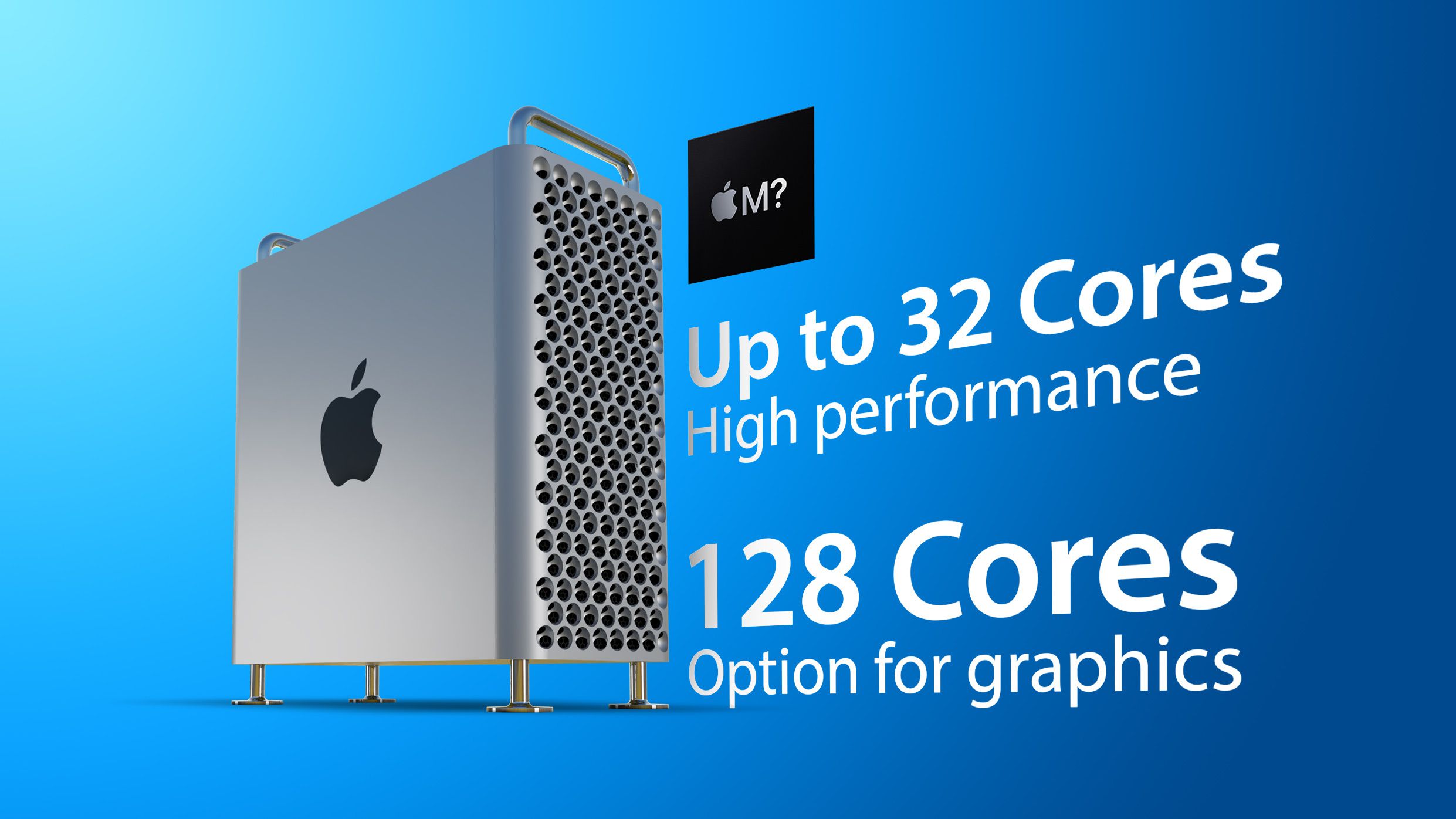I would re-read it. The full rumor was an Apple Silicon Mac Pro that would remind people of the Cube, and a full tower Intel Mac Pro revision.
To replace the Mac Pro trashcan, Apple gave the Mac Pro a huge update in 2019 with the return of the tower design – and alongside this device came the Pro

www.idropnews.com
"According to Bloomberg’s Mark Gurman, the new Mac Pro Cube will look similar to the PowerMac G4 cube but would resemble a G4 Cube mixed with the current cheese grater design. Jon Prosser says it “looks like three or four Mac minis on top of each other.” This shows how Apple is returning to its roots by bringing back some classic things from the Steve Jobs era."
"For those of you who like the upgradability of the current Mac Pro, Apple will keep it in the lineup. It will receive updated internals from Intel and stick around for a while before Apple eventually gets rid of it."
You are trying to muddle Gurman's reports with Prosser's. That isn't about re-reading, that is more so about trying to move the goal posts.
First, Prossers doesn't make sense. The Mini is 7.7" ( wide / deep) and 1.4" high. If wanted to "cube" that larger dimension that ratio is 5.5 ; not 4 or 3 . 3 or 4 would not look like a cube.
The only way to a approximately a cube would be shrink the footprint even more . That is relatively suspect if going to increase the port outputs of the mini ( to partially compensate for nixing all slots ) or cool a Jade4C ( probably in the > 280-320 W zone ). The notion with the "fan on the bottom" at a 90 degree angle to the cooling air flow for ~3000W probably isn't going to work well. So "stacked minis" is quite dubious.
Nov 2 2020
"... The new Mac Pro is said to have a design that looks like the current design, but in a more compact enclosure that's "about half the size." ... "
As part of the transition to Apple Silicon, Apple is designing a new Mac Pro that has a smaller form factor, reports Bloomberg. The new Mac Pro is...

www.macrumors.com
May 2021
"... Alongside the faster, more powerful processor, the new Mac Pro will feature a smaller design that "could invoke nostalgia for the Power Mac G4 Cube, ... "
Apple is working on an updated model of its Mac Pro that may feature an Apple silicon chip with as many as 32 high performance cores, and a 128 core...

www.macrumors.com
At a ~300W CPU the Mac Pro case is a far more sensible "starting point" for a Jade4C system. Provisioned for about that kind of size of package ( although Jade4C likely even bigger ) and thermals. The Mini as a reference design starting point is doesn't make any sense (if actually want to do a good job).
If chop the handle and feet height and just "halve" the actual body of the Mac Pro and would end up with something close to 8.5" wide and tall. From the front profile, it would be square. A cube's front profile is square. That will be a resemblance on that dimension. Off angle or fully from the side , it won't. But sitting shooting a picture of the Mac Pro a desk alongside a monitor it would be a frontal photo shot. the primary promotional shot in the demo or press release would look like a cube. ( also if they did a side-by-side shot like they did with the MP 2012 versus MP 2013 at the 2013's intro. )
To cut something in halve is only to cut along one dimension. If Apple is cutting across two dimensions then the correct descriptive word would be "quarter".
A 3-4 stack mini for a Jade2C that moves to "front to back" cooling would make for a fine Mac Mini Pro. If Apple collapses the enclosure so much that they exclude alterative internal storage provisioning that really shouldn't be labeled a Mac Pro. That's by Apple 's own criteria as a known problematical issue with the MP 2013 baseline design (paraphrased "leaned too hard on Thundebolt" ). If they squeeze off PCI-e v4+ lanes down to 12 x1 PCIe- v4 lanes they would have basically failed at their objective for "high bandwidth solutions" provisioning. Making folks who need > 64GB buy CPU and GPU cores they may not need is another repeat of the "value proposition" problem from before ( e.g., forcing buying 2 GPUs when users only wants one ).
There very well could be some OCD Apple industrial design rule that says that all literal desktop Macs can't have a 2D desktop surface footprint bigger than 8' x 8" . If present they will paint themselves into a corner again.
MPX modules ain't happening, at least on this Mac Pro Mini. Jade 2c and 4c leaked at the same time as the MacBook Pro chips. They have integrated graphics. The debate window isn't completely closed. But if you believe all the other leaks from Gurman (which have been accurate so far), he's already said integrated graphics.
but there are 100's of PCI-e cards that are not GPUs. What pausible rationale is there for 'throwing the baby out with the bath water ' ? Since can't do a 3rd party GPU have to eject all SDI pro 4K+ video capture cards? All multiple Tb U.2 drive sleds cards have to be ejected. 40GbE ... to the trash can.
Perhaps a fig leaf coverage to prove not being anticompetitive discrimination toward just GPU cards so discriminate against all of them. Sure they can trot out that figleaf but are they really accomplishing core Mac Pro goals at that point? If hypocrisy is a product objective is that really going to be the "best Mac Pro ever" ?
And the Mac Pro can't lose any depth in the case, otherwise full size PCIe cards and MPX cards won't fit. For that to happen, you'd have to believe that the Mac Pro is literally just going to loose half it's height and look like a giant bar of aluminum sitting on your desk. It doesn't make any sense. That rules out at least full width PCIe slots and MPX modules of any kind.
If you need more than one internal drive , video capture , > 10 GbE speed Ethernet, Afterburner, etc. how does that make sense? Having slots goes far, far , far beyond the AMD vs Nvidia fanboy wars banter. Or provisioning the built-in TB ports with DisplayPort.
The folks who need these and for which a large segment of these cards are stuffed into a external PCI-e card enclosure there likely
zero net saving of actually desktop footprint consumed. The TB expansion box soaks up desktop planar space also. Maybe it is more a squarish than rectangle footprint consumed but the net space consumed is about the same.
Which again, is why Apple keeping the Intel tower going makes sense. If they dropped MPX without it even surviving past the 2019 Mac Pro a lot of Mac Pro customers would be getting out their pitchforks.
If Apple only does a Mac Mini Pro and not a "smaller" Mac Pro then yes, doing a feature bump on the current Mac Pro chassis / board would make much more sense and make it more likely.
Basically Apple can do both the 2019 and 2013 Mac Pro at the same time.
Apple pragmatically did a MP 2013 refresh with the iMac Pro. Same "one and only one" internal drive, approx 400W power supply , coupled CPU and GPU cooling ( single exhaust vent) , leaning heavily on Thunderbolt. Single Ethernet output. However, they had some sense to change to name on the product and put it into a different product line in the Mac line up.
Slapping a "Mac Pro mini" on what is really a "Mac Mini Pro" smacks of not being able to deliver on a full transition in 2 years and doing some P.T. Barnum misdirection to cover that up. Pretend that they Steve Jobs relality distortion field is turned on full blast and just "can't innovate my *ss" their way out of it. When all along it is the "same sh*t different day". Same painted into corner.
If Apple "has to" sell an improved Intel version alongside a a Mac Mini Pro then that is basically a tacit admission that really didn't complete the translon by the two year deadline. So why perpetrate the fraud when it is obviously transparent?
P.S. If Apple didn't like "Mac Mini Pro" just call it "Mac NeXT". The future of the Mac desktop. the Mac Cube was largely iterating on the original NeXT. Trying to be the mysterious "future shape" just to be different. Then it would be more clear that they were just walking away from the classic Mac Pro product space.
P.P.S. Forgot the other MP 2013 problematic issue that Apple outlined. Coupling more than one uneven thermally driven dies to one centralized core cooler. Not quite as uneven but they will need a non simplistic cooler to decouple 4 dies from cross contaminating each other when the workload doesn't spread out exactly evenly. ( which is shouldn't on most apps. ) .




